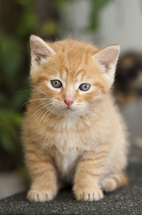Declawing

Pet declawing, also known as onychectomy, is the surgical removal of the claws and part of the toes of a pet. Common for cats, this procedure involves removing all or part of the distal phalanx, or end bone, of a cat's toes. Declawing is a medical procedure in which a veterinarian amputates a part of each toe that includes the last bone and claw. The objective of this surgery is to prevent scratching which may cause injury to people and other animals, and damage to household items.
There may be medical reasons to declaw an animal, such as chronic inflammatory conditions, tumors, persistent and severe infections, and gangrene. Declawing for any of these reasons is usually limited to the affected claw, leaving the healthy claws intact.
The procedures commonly used to declaw a cat may include:
- Use of a scalpel or other tool to remove a cat's claws
- Laser technology to vaporize claws
- A tendonectomy severs the tendons attached to the claws, this preserves the claws but prohibits the ability to extend the claws to scratch
Scratching is normal behavior for cats. In some cases, the scratching may become aggressive, causing injury to pet owners or damage to items in the home. These reasons may prompt owners to consider declawing their cats. As an alternative to declawing, methods to help a cat stop scratching may include:
- Provide a scratching post
- Covering furniture with plastic
- Manicuring cats nails with acrylic caps
- Spraying perfumes or other scented sprays to deter scratching
The process of declawing is one of the most controversial elective surgeries performed on cats. Many people believe cat declawing is inhumane and rarely necessary, and prefer alternative ways to manage scratching behaviors. Others believe cat declawing is necessary, as alternative methods may not work.
Additional Resources
- MedlinePlus
- American Veterinary Medical Association
- American Veterinary Society of Animal Behavior
- United States Department of Agriculture
- PetMD
Back to top
